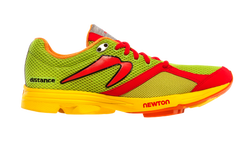
Custom orthotics are simply the best way to correct subtle imbalances in the foot and ankle that can lead to running injuries. A custom orthotic is not just an arch support or a custom foot bed with extra cushioning. A custom running orthotic is a completely custom made medical device designed to control abnormal motion, correct for alignment problems and correct faulty biomechanics that can lead to running-related injury.
When a sports medicine specialist performs your biomechanical exam, the sports medicine doctor takes numerous measurements of of the positions and angles of the feet, ankle and legs. Based on all of this information, the podiatrist makes a plaster mold of the feet and writes a prescription for the orthotic fabrication. The orthotic lab uses all of this to create an exact replica of your feet and then custom forms the orthotics device that will correct any problems in alignment. This can help to increase your running efficiency and decrease the risk of running injury.
The biggest problem for many runners in Houston is that there isn't a lot of time to waste. Because our sports medicine podiatrist is an active 11 time Ironman triathlete, marathon runner, father and busy professional, he sympathizes with the common plight of the busy Houston Area athlete. For this reason his practice is dedicated exclusively to house calls for runners in the Houston Metro, Inner Loop, Montrose, Galleria, and Houston Heights.
If you need custom orthotics, he will come right to your home or office to perform your biomechanical exam and cast you for your custom running orthotics. He will even personally deliver the orthotics to you. That way you won't have to skip a business luncheon or afternoon run just to see an expert. Let the expert come to you!
Dr. Christopher Segler, DPM is board certified, American Board of Podiatric Medicine. He believes that the best medicine can be fast, convenient and low-cost treatment. His innovative housecall podiatry practice model helps to keep costs down for patient with making expert care more convenient than ever.
If you have a tight work schedule we can even see you in your own office. We often do house calls for executives so that they can be seen between meetings. When there is no time to waste, a house call is definitely the best treatment and just what the doctor ordered!
We offer house calls all over the Houston area, including the Galleria Area, West University, Bellaire, Southside Place, Downtown Houston, Midtown Houston, Uptown Houston, Memorial, Montrose, Houston Heights, and Washington Heights.
If you have a question about toenail fungus and wonder whether or not the laser fungus removal treatment might be right for you, you can call and speak directly with a toenail expert by calling 713-489-7674. And yes, you will actually get to speak with the doctor.
When a sports medicine specialist performs your biomechanical exam, the sports medicine doctor takes numerous measurements of of the positions and angles of the feet, ankle and legs. Based on all of this information, the podiatrist makes a plaster mold of the feet and writes a prescription for the orthotic fabrication. The orthotic lab uses all of this to create an exact replica of your feet and then custom forms the orthotics device that will correct any problems in alignment. This can help to increase your running efficiency and decrease the risk of running injury.
The biggest problem for many runners in Houston is that there isn't a lot of time to waste. Because our sports medicine podiatrist is an active 11 time Ironman triathlete, marathon runner, father and busy professional, he sympathizes with the common plight of the busy Houston Area athlete. For this reason his practice is dedicated exclusively to house calls for runners in the Houston Metro, Inner Loop, Montrose, Galleria, and Houston Heights.
If you need custom orthotics, he will come right to your home or office to perform your biomechanical exam and cast you for your custom running orthotics. He will even personally deliver the orthotics to you. That way you won't have to skip a business luncheon or afternoon run just to see an expert. Let the expert come to you!
Dr. Christopher Segler, DPM is board certified, American Board of Podiatric Medicine. He believes that the best medicine can be fast, convenient and low-cost treatment. His innovative housecall podiatry practice model helps to keep costs down for patient with making expert care more convenient than ever.
If you have a tight work schedule we can even see you in your own office. We often do house calls for executives so that they can be seen between meetings. When there is no time to waste, a house call is definitely the best treatment and just what the doctor ordered!
We offer house calls all over the Houston area, including the Galleria Area, West University, Bellaire, Southside Place, Downtown Houston, Midtown Houston, Uptown Houston, Memorial, Montrose, Houston Heights, and Washington Heights.
If you have a question about toenail fungus and wonder whether or not the laser fungus removal treatment might be right for you, you can call and speak directly with a toenail expert by calling 713-489-7674. And yes, you will actually get to speak with the doctor.



 RSS Feed
RSS Feed